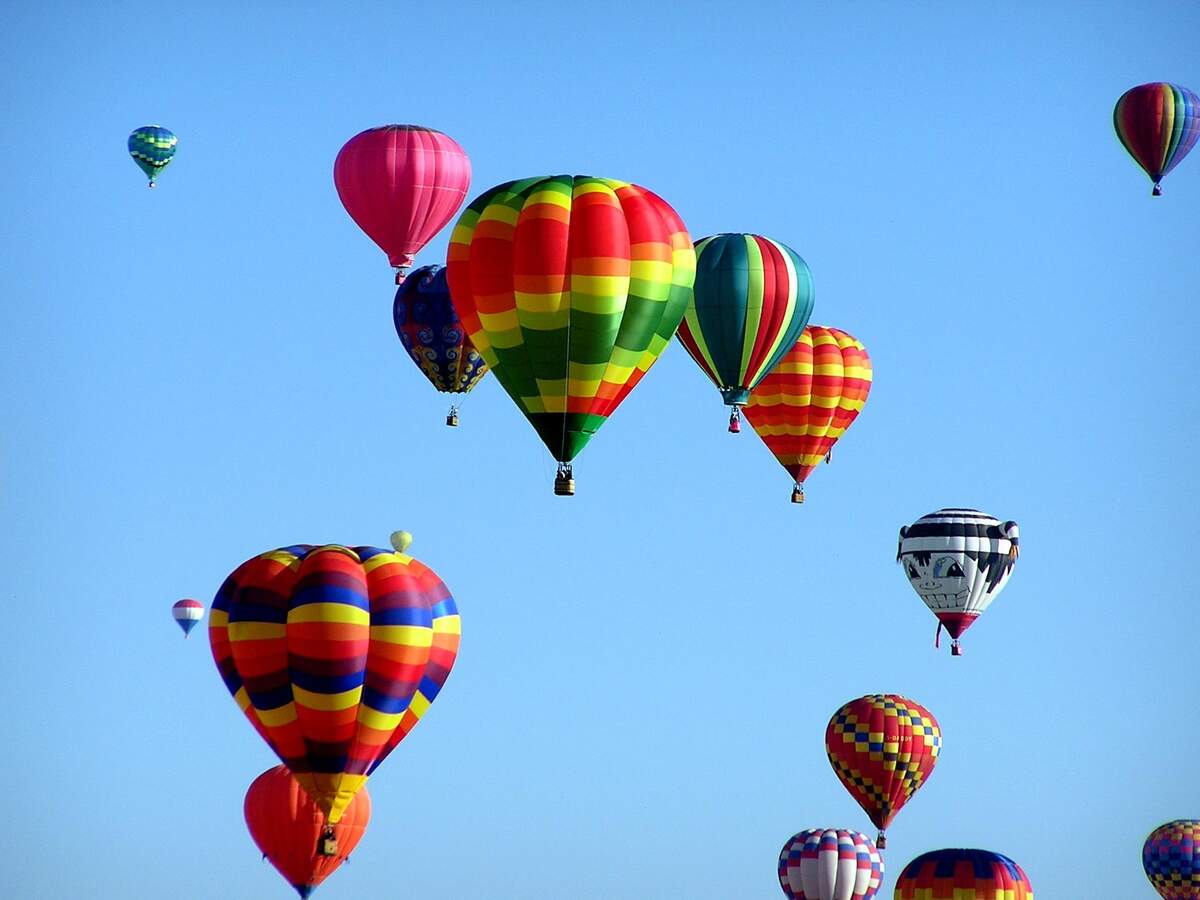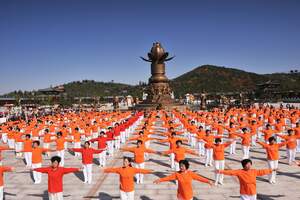

Balloon Ascension Day
Also known as
Aviation in America Day
Observed
annually on January 9th
Dates
Tags
Hobbies & Activities
Hashtags
Sources
https://www.mountvernon.org/library/digitalhistory/digital-encyclopedia/article/george-washington-and-ballooning/
https://www.nationalballoonmuseum.com/about/history-of-ballooning/
https://www.anrdoezrs.net/links/100298379/type/dlg/https://www.newspapers.com/image/41021460/
https://www.anrdoezrs.net/links/100298379/type/dlg/https://www.newspapers.com/image/538163506/
https://www.anrdoezrs.net/links/100298379/type/dlg/https://www.newspapers.com/image/584902367/
https://www.anrdoezrs.net/links/100298379/type/dlg/https://www.newspapers.com/image/717517262/
https://www.thisdayinaviation.com/9-january-1793/
Balloon Ascension Day commemorates the anniversary of the first manned balloon flight in America, completed by Frenchman Jean-Pierre François Blanchard on January 9, 1793. The launch took place in the courtyard of the Walnut Street Prison in Philadelphia, the capital of the United States at the time. Viewers in the courtyard bought tickets from Blanchard, but many more watched for free from nearby lots and buildings. Blanchard's hydrogen-filled silk balloon, known as an aerostat, was yellowish in color, with a blue-painted and spangled boat (gondola or capsule).
President George Washington was present, arriving for the inflation of the balloon, which began around 9 a.m., and was greeted with a salute of 15 rounds of artillery. A band also played during the inflation and continued when the balloon took flight. At 10 a.m., President Washington presented Blanchard a letter of introduction, and the balloonist prepared for his 45th balloon flight.
At approximately 10:10 a.m., Blanchard's balloon rose over the courtyard, and he was saluted with an artillery discharge. As he ascended, he saluted the crowd with a flag, which was French on one side and American on the other. Along with him were scientific instruments and a small dog. He drifted southeast, crossing the Delaware River, and reached a height of about 5,800 feet. After 46 minutes of flight, Blanchard and his balloon landed near the village of Deptford, in Gloucester County, New Jersey, about 15 miles from Philadelphia. He returned to the city and met with President Washington again that evening.
While Blanchard's flight was the first gas balloon to carry a human in America, the first ever hot air balloon to carry a human took place in Paris on November 21, 1783. The balloon, made of paper and silk by the Montgolfier brothers, was flown by Francois Pilatrê de Rozier and Francois Laurent, Marquis of Arlanders. They fed the fire that created the hot air and traveled a distance of about 5 ½ miles in 25 minutes. Days later, on December 1, the first gas balloon to carry a human was flown by Jacques Alexander Charles and Nicholas Louis Robert in Paris. Powered by hydrogen—just as Blanchard's would be in Philadelphia almost a decade later—it was in the air for 2 ½ hours and went a distance of 25 miles.
Although expensive, balloon travel soon became the primary form of air travel, and remained so until after the invention of the fixed-wing aircraft by the Wright Brothers in 1903. Gas balloons were preferable to hot air balloons because they could be kept in the air longer and their altitude could be more easily controlled. The first crossing of the English Channel by balloon took place in 1785, done by Jean-Pierre François Blanchard—who would go on to fly the balloon that today's holiday commemorates—and American John Jeffries.
In the early 1900s, airships, also called blimps, began being built. Inflated with hydrogen gas, they had flaps and engines with propellers to help control speed and direction. They became the first commercial airliners, with spacious cabins for passengers, and also were used for military purposes. The first airship was the 420-feet-long Zeppelin LZ 1, first flown in 1900, which could travel 600 miles in two days. The first airship in the United States took flight in 1904. The most famous airship was the Hindenburg, built by Germany in 1936. While trying to dock in Lakehurst, New Jersey, in 1937, it caught fire and burned in less than a minute. Following the disaster, the use of airships began to decline. Other disasters took place and hydrogen airships were phased out.
The modern hot air balloon, which uses a propane gas burner to heat the air, was created in 1960 by Raven Industries in Sioux Falls, South Dakota. On October 22, 1960, Paul (Ed) Yost, one of Raven Industries founders, piloted the new balloon, which traveled 3 miles in 25 minutes. Yost and his crew did much to improve their new system and promote it.
The first U.S. National Hot Air Balloon Championship was held in Kalamazoo, Michigan, in 1963. In the years that followed, it was held in Nevada, and then in Iowa, in Des Moines, and then in Indianola from 1971 to 1988, before moving to other locations. After it left Indianola, the city began hosting the National Balloon Classic in its place. Besides these national ballooning events, smaller events are held by local ballooning clubs all over the United States and the world.
Sport ballooning today is usually done with hot air balloons, but gas ballooning also has adherents. There also are hybrid balloons, which use both hot air and helium. One of these balloons, Spirit of Freedom, was flown by Steve Fossett, who in 2002 became both the first person to circumnavigate the world in a balloon, and the first person to circumnavigate the world nonstop in any aircraft. There have been many feats such as this in the centuries since the first balloon took flight, and today we commemorate one of them: the first manned balloon flight in America, completed when Jean-Pierre François Blanchard ascended in a gas balloon on today's date in 1793.
How to Observe Balloon Ascension Day
- Go on a balloon flight.
- Visit the National Balloon Museum.
- Attend the next National Balloon Classic, the U.S. National Hot Air Balloon Championship, or another local or national event.
- Visit the spot where the 1793 balloon flight took place.
- Read The First Air Voyage in America by Jean-Pierre François Blanchard.
- Read Falling Upwards: How We Took to the Air or another book about ballooning.





















